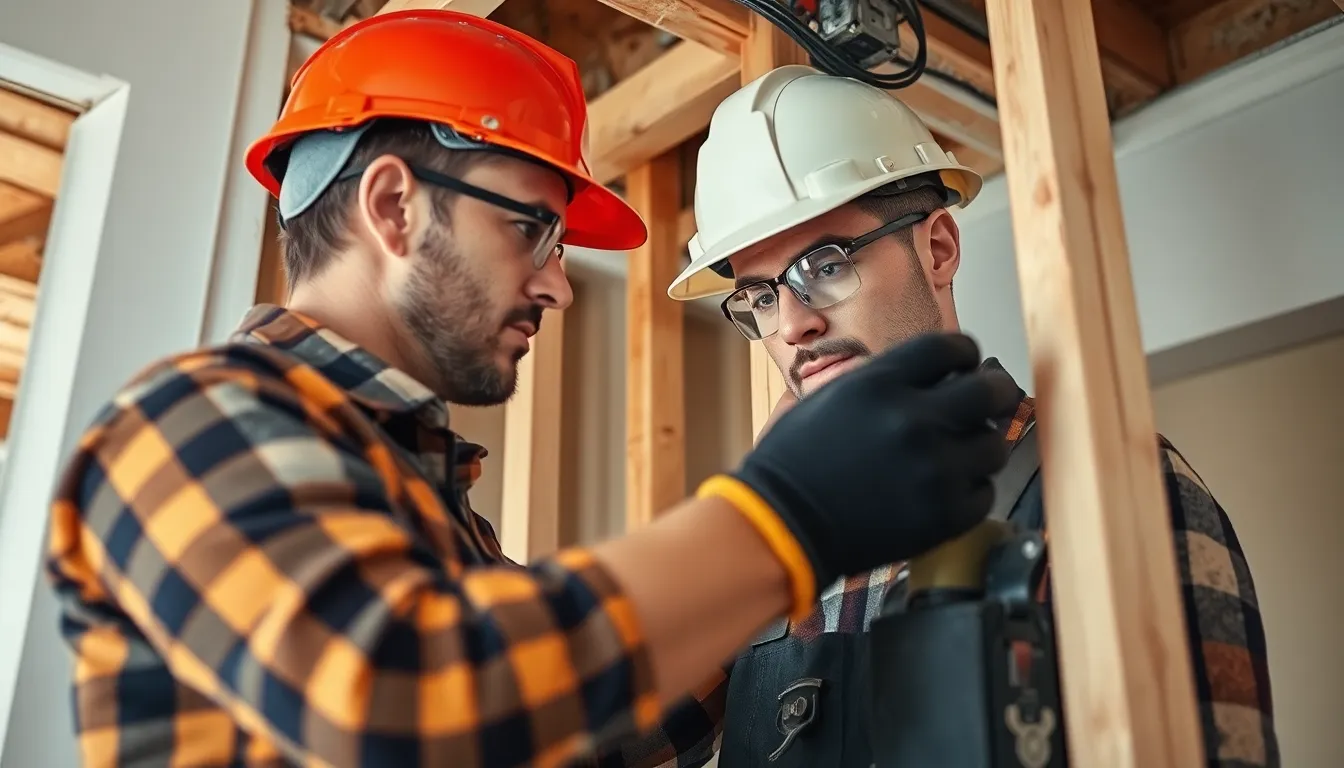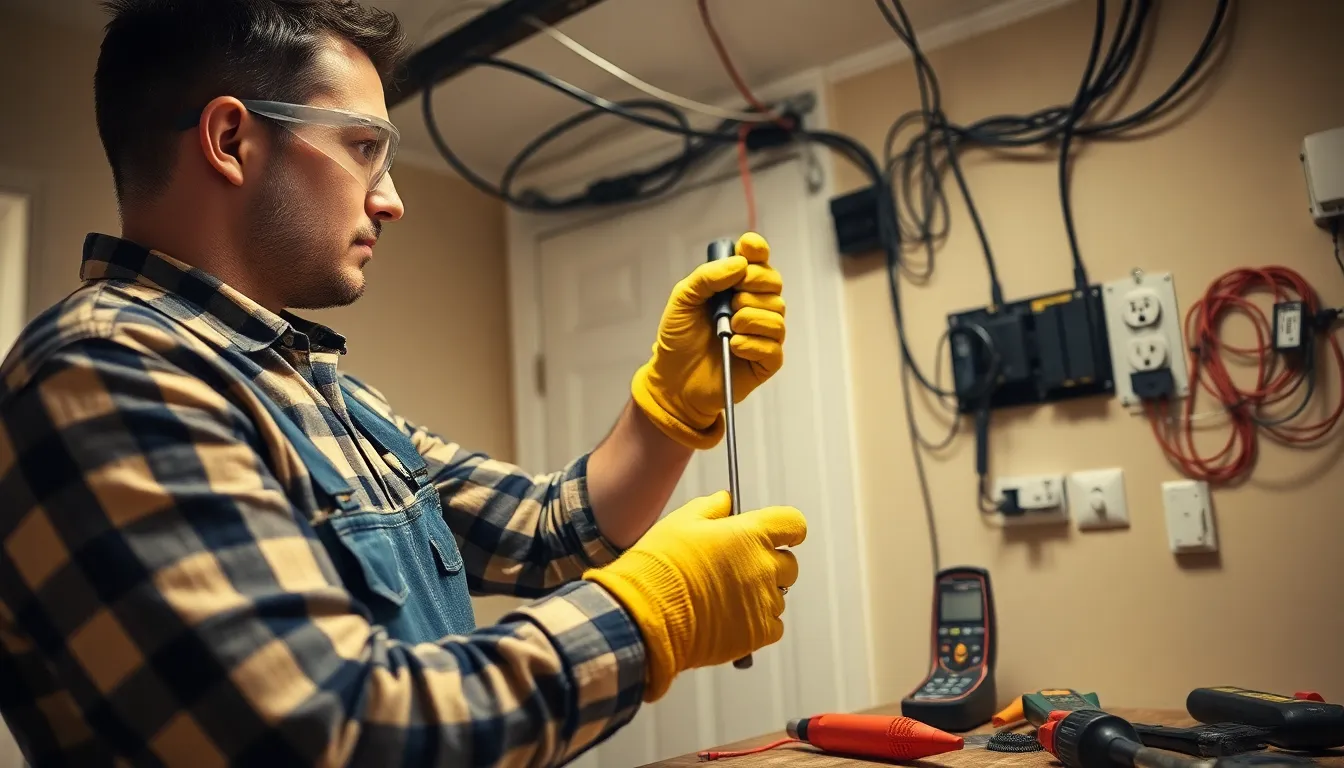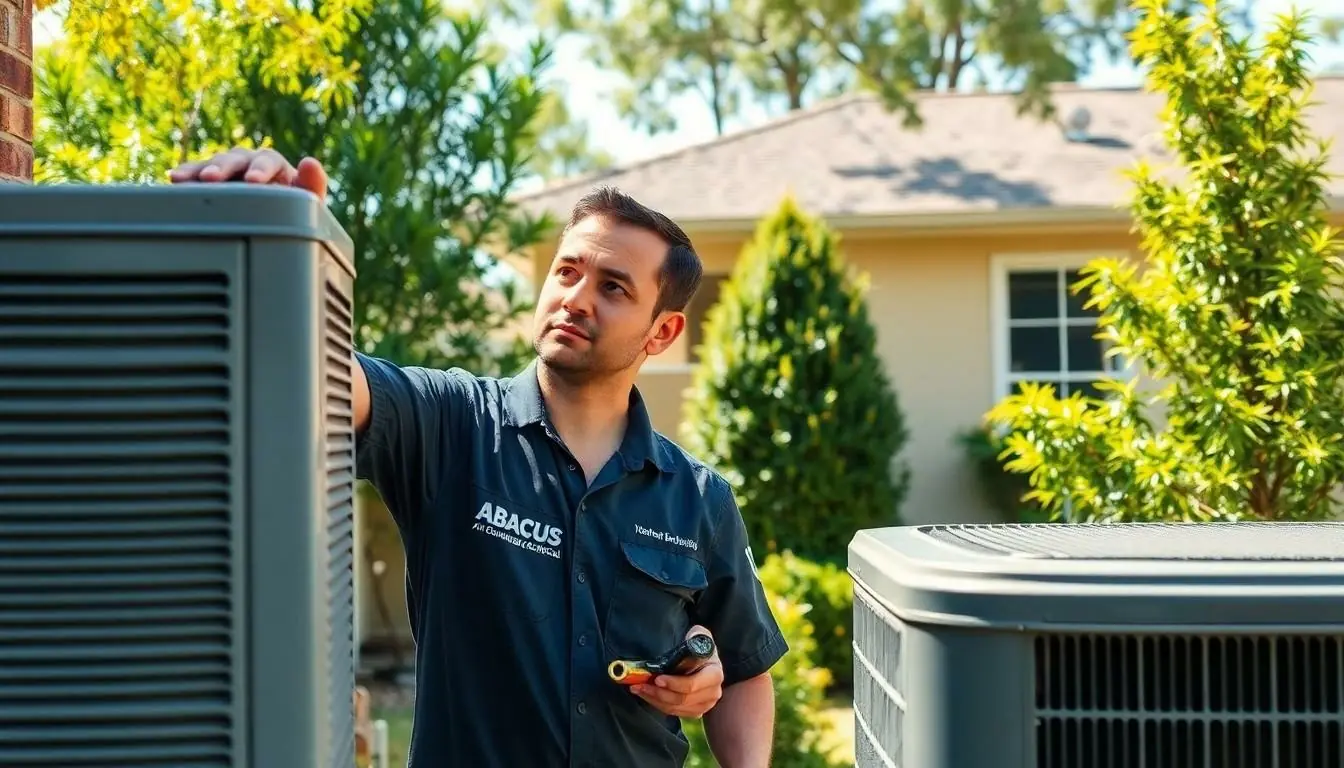Table of Contents
ToggleWiring installation might not sound like the most thrilling topic, but let’s face it—without it, life would be a little dimmer, literally! Imagine a world where your gadgets refuse to charge, your lights flicker like a bad horror movie, and your Wi-Fi signal plays hide-and-seek. It’s enough to make anyone pull their hair out.
Overview of Wiring Installation
Wiring installation forms the backbone of modern electrical systems. It facilitates the connection and distribution of electricity throughout homes and businesses. Proper installation ensures safety, reliability, and efficiency in energy usage.
Electrical wiring comprises various components, including wires, circuits, outlets, and switches. These elements work together to support devices like appliances, lighting, and electronic equipment. Professionals typically categorize wiring into types such as power, telecommunications, and data.
Understanding the local electrical codes is crucial for any installation project. Compliance with regulations ensures safety and reduces the risk of hazards like electrical fires. Homeowners should always consult licensed electricians for complex installations to maintain functionality and adherence to legal requirements.
Selecting the right materials impacts the overall effectiveness and longevity of the wiring system. High-quality insulated wires prevent issues like short circuits and interference. Using durable conduits also contributes to a safe environment by protecting wires from physical damage and environmental factors.
Once installation begins, following a systematic approach promotes consistency and thoroughness. Planning the layout beforehand saves time and minimizes errors. Testing each connection during and after installation confirms that everything operates as intended.
Maintenance is vital for preserving electrical systems long-term. Regular inspections help detect wear and prevent failures before they occur. Keeping wiring clean and unobstructed further enhances operational efficiency and safety.
This detailed perspective on wiring installation covers its essential aspects. Appropriate execution facilitates seamless energy flow, ensuring a reliable infrastructure that supports everyday life.
Types of Wiring Installation

Wiring installation encompasses various applications designed to meet specific needs. Understanding these types allows for more effective planning and execution.
Residential Wiring
Residential wiring focuses on the electrical systems within homes. Components include light fixtures, outlets, and switches that power everyday appliances. Installers use materials like non-metallic sheathed cables to enhance safety and efficiency. Local codes dictate adherence to specific regulations, ensuring compliance during installation. Connection layouts require careful planning, accommodating future expansions. Inspections follow installation to guarantee that systems operate correctly and safely.
Commercial Wiring
Commercial wiring addresses the requirements of businesses and larger facilities. Systems typically involve high-voltage circuits designed for equipment like HVAC units and industrial machinery. Installers often utilize conduit systems for protection and organization of wires. Compliance with both local and national codes is critical to ensure safety standards. Load calculations determine the appropriate wiring methods to support electrical demand. Regular maintenance and inspections help sustain optimal performance in commercial environments.
Tools and Materials Needed
Wiring installation requires specific tools and materials for effective execution. Proper preparation ensures a safe, efficient, and compliant installation process.
Essential Tools
Wiring projects necessitate several essential tools. Wire strippers remove insulation from wires, allowing for secure connections. A voltage tester checks for live wires before beginning work, ensuring safety. Screwdrivers, both flat and Phillips head, are used for fastening outlets and switches. Pliers, particularly needle-nose, assist in bending and twisting wires for connections. Additionally, a drill is essential for creating holes in walls or studs when running wire. Measuring tape provides precise measurements for planning layouts, while a level guarantees straight installation of outlets and switches.
Recommended Materials
Quality materials enhance the effectiveness of wiring installations. Non-metallic sheathed cables, such as Romex, are standard for residential applications. Insulated wires reduce the risk of electrical shock and short circuits. Conduits protect wires from physical damage and environmental factors, making them ideal for commercial settings. Outlets and switches must meet electrical code standards for safety and reliability. Circuit breakers protect against overloads, minimizing fire risks. Junction boxes secure wire connections and maintain structural integrity. Selecting high-quality materials contributes to the longevity and efficiency of electrical systems.
Wiring Installation Process
The wiring installation process involves several critical steps. Proper planning ensures an efficient and safe installation.
Planning and Design
Creating a thorough plan forms the foundation of effective wiring installation. Identify the layout for wiring runs, considering the specific needs for lighting and outlets. Assessing the electrical load helps determine circuit requirements. Compliance with local electrical codes is essential, as it reduces safety risks. Schematic diagrams can clarify wire placements, ensuring a logical flow. Consulting licensed electricians brings expertise to complex projects, guaranteeing adherence to regulations. Selecting locations for outlets and switches impacts functionality and accessibility.
Execution and Techniques
Following the planning phase, execution requires precise techniques for reliability. Begin by preparing the workspace, ensuring all tools and materials are accessible. Use wire strippers to remove insulation cleanly, avoiding damage to the wire. Connect wires securely by utilizing appropriate connectors and terminal blocks. Test each connection with a voltage tester to confirm voltage before proceeding further. Employing proper techniques during installation considerably enhances safety and performance. Installing conduits protects wiring and organizes the layout. Running wires along the designated paths minimizes interference and maintains an organized appearance.
Safety Considerations
Wiring installations require strict adherence to safety practices. Understanding local electrical codes becomes essential for compliance. Guidelines ensure installations minimize risks such as electrical fires and shock hazards. Employing a licensed electrician for complex tasks guarantees expertise in meeting these standards.
Using high-quality materials has a direct impact on safety. Insulated wires and durable conduits enhance the effectiveness and longevity of electrical systems. Electricians recommend thorough inspections post-installation to detect potential issues early. Regular maintenance checks contribute to the overall safety of electrical systems.
Wiring placement plays a critical role in safety. Adequate spacing and secure connections prevent accidents and failures in the long term. Protecting wires with conduits minimizes physical damage. Ensuring outlets and switches are grounded prevents shock hazards.
Awareness of environmental factors further safeguards installations. Moisture-prone areas require special wiring and protective measures. Temperature extremes can also affect wire integrity. Monitoring these conditions helps maintain system safety.
Employing proper tools ensures a safe working environment. Essential tools include voltage testers and wire strippers to confirm safety before and during installations. Each tool contributes to accurate and secure wiring connections.
Educating homeowners on safety practices fosters responsibility. Encouraging regular inspections and awareness of warning signs improves long-term safety. Safe wiring practices facilitate reliable energy flow in homes and businesses, supporting everyday life.
Wiring installation is a vital aspect of modern living that directly impacts safety and efficiency. By prioritizing high-quality materials and adhering to local codes, individuals can ensure their electrical systems function reliably. Regular maintenance and inspections play a crucial role in prolonging the life of these systems and preventing potential hazards.
Whether for residential or commercial applications, a systematic approach to installation promotes long-term performance and safety. Consulting with licensed electricians for complex projects can further enhance compliance and reliability. Ultimately, investing in proper wiring installation sets the foundation for a safe and efficient electrical infrastructure that supports daily activities.







